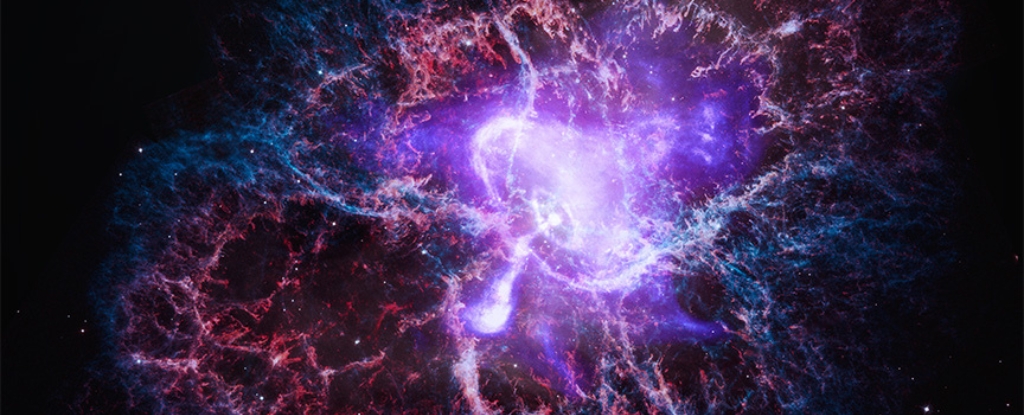Products You May Like
NASA has been using X-rays to crack the invisible secrets of the universe for decades.
The Einstein Observatory pioneered X-ray astronomy in the late ’70s, but the crown jewel of this science field is the Chandra X-ray Observatory, which has been in space for the last 25 years.
Here are some of Chandra’s most stunning images and groundbreaking discoveries of the invisible X-ray universe.
NASA’s Chandra X-ray Observatory has been capturing the invisible universe for 25 years.
The space telescope launched aboard the space shuttle Columbia on July 23, 1999. It was the heaviest payload the shuttle had ever carried.
“Chandra’s discoveries have continually astounded and impressed us over the past 25 years,” Eileen Collins, commander of that Columbia mission, said in a press release on Monday.
X-rays are not in the visible range of light, but they often point to dramatic events in space.
X-rays are especially valuable to astronomers because they often come from objects that are extremely hot or events that generate a lot of energy – like the debris flying out from an exploding star, or the superheated material swirling around a black hole.
Chandra often reveals new details that other telescopes can’t see.
In this image that combines data from the James Webb Space Telescope and Chandra, Webb’s observations paint an ethereal picture of the Pillars of Creation, a cloud formation that’s constantly birthing new stars.
Chandra’s contribution reveals a sea of young stars burning bright in X-rays. These are the multi-colored pinpoints of light scattered across the image.
Take the bright purple spots in this galaxy, for example. Those are X-ray-emitting objects that Chandra identified.
“Often you get like a gas cloud that’s glowing, and then there’s this X-ray source in the middle that’s pumping the energy into it that’s causing it to glow,” Jonathan McDowell, an astrophysicist who leads science data systems for Chandra, previously told Business Insider.
“If you don’t have Chandra, you can’t see that. So you’re missing a big part of the story,” he said.
Chandra’s X-ray vision revealed that the universe is teeming with black holes.
Chandra’s other landmark achievements include the first-ever direct evidence for the existence of dark matter, which is a completely invisible, mysterious substance that makes up about 27% of the universe.
Chandra was also the first to directly detect colliding neutron stars that were sending ripples in space-time – called gravitational waves – across the universe.
It also revealed the X-ray emissions from Jupiter‘s polar lights.
On Earth, we call them the northern and southern lights, or aurora borealis and australis. They’re the dancing, colorful ribbons of light that sometimes appear in polar skies and even occasionally come as close to the equator as Arizona.
The aurora is caused by charged particles from the sun, which create a similar effect on other planet’s poles. Chandra spotted the phenomenon on Jupiter.
The image also shows clouds of X-ray emission surrounding the giant gas planet.
All in all, Chandra has made nearly 25,000 observations.
It’s been one of NASA’s most productive astrophysics missions. Scientists have written more than 10,000 peer-reviewed papers based on its data.
Some of the most stunning photos are collaborations with other observatories, like Webb.
Joining forces allowed scientists to identify the likely cause of a mysterious structure called the “Green Monster” inside the supernova remnant shown here. You can see it just right of center, where there’s a green loop disrupting the blue and red billowing out into space.
Chandra data revealed an association between the Green Monster and the blast wave that shot out from the star when it exploded. They think the blast wave created the Green Monster when it slammed into material surrounding the star.
Chandra has even turned its gaze to the center of our galaxy.
In May, astronomers using Chandra discovered a vent releasing hot gas from the center of the Milky Way. They believe the chimney of venting gas might come from eruptions from the galaxy’s central supermassive black hole.
Here’s a snapshot of the supermassive black hole at the center of the Milky Way.
Chandra has also revealed that our galaxy’s supermassive black hole, called Sagittarius A*, is spinning rapidly.
In fact, Chandra discovered, the black hole is spinning so fast that it’s squishing space-time down like a football.
Chandra may be nearing the end of its mission after drastic budget cuts.
NASA’s 2025 budget request slashed Chandra’s funding from $68 million to $41 million. After that, the budget proposes to give the observatory $26.6 million per year until a drastic plummet to $5.2 million in 2029.
Chandra’s operating team has said that’s just the amount it would need to decommission the telescope and end its operations.
Chandra is still fully functional, though, and continues to make visually stunning discoveries.
By studying Chandra detections of the X-ray emissions of neutron stars – like the one at the center of this supernova remnant –scientists recently discovered that neutron stars may contain a new type of ultra-dense matter.
Chandra could reveal even more invisible secrets of the cosmos in its remaining years.
This article was originally published by Business Insider.
More from Business Insider:
